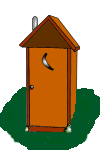Thanks to the many Cub leaders who responded to the follow up camping survey. The goal was to share information about Cub Scout activities and provide information to new Cub Scout leaders. Meridian Packs are extremely active and always looking for new ideas.
Meridian Cub Packs average almost seven day trips every year to a broad variety of destinations. Regional Parks are very popular, with Packs visiting Tilden Park, Mt. Diablo, Black Diamond Mines, Las Trampas, Chabot, and Sunol for hiking and picnics. Regional Parks are close by and offer a great outdoor experience with minimal planning issues (all Regional Parks have websites with detailed information). Trail Trekker hikes are known to many units with the Rodeo Lagoon hike a common favorite. Also mentioned for day trips were: Scout Days at sporting venues (Oakland Athletics, Golden State Warriors, Berkeley), Nike Missiles/Marin Headlands, Pumpkin Patch/Western Railway Museum in Fairfield, and Bowling night.
Most Cub Packs camped three or four times in 2009 (average = 3.2 nights). The most common location for regular outdoor camping is Mt. Diablo, followed by Lake Chabot and Lake Del Valle. All have group campsites large enough to accommodate the 40-80 campers on a typical Cub overnight in the Meridian District. Packs also camped at Gilroy Gardens, Borges Ranch, Gillespie Youth Camp at Tilden Park, Sugar Loaf in Walnut Creek, Sam Taylor State Park, New Brighton Beach, Big Basin, and the Oakland Zoo. Pre-packaged Scout camping overnights on the USS Pompanito, USS Hornet, and Chabot Space Center are popular, partly because they do not require a lot of camping equipment. Also extremely popular are Day Camp, Webelos at Camporee, and Resident Camp at Wolfeboro. (Every one of these was specifically called out as exceptional by more than one Pack). Family Camp, on the other hand was typically described as very good but too expensive for most families.
With one exception, Meridian Cub Packs do not own or maintain any camping equipment. Some rent griddles and stoves from places like Gagnon’s Party Supplies, but most scramble to assemble the tents, lanterns, stoves, pop-ups, sleeping bags, and everything every time they camp. The biggest impediment to Pack ownership of equipment is that no one wants to store it or take responsibility between outings. All Cub Packs report that scheduling outings is difficult because families are so busy.
It is extremely difficult for Cub families to find enough time to do things, like camping, that require a lot of preparation. On the other hand, camping is by far the most popular activity for the boys so Packs conduct as many overnights as possible despite the problems. Packs indicated that they do not need or want Meridian District assistance with their outings, but central storage of equipment, information about what camping equipment families should purchase for eventual use in Boy Scouts, and publicizing places to go (like Camp Herms) would be useful.
When it comes to online activities, Meridian Cub Packs are all over the place. Almost all units have web sites, but they are described as “out of date” or “not useful” by a lot of respondents – unless the Pack is lucky enough to have a talented webmaster. Scouttrack is the most popular program to manage advancement and contact information. Cub Units are also using Google Groups, myscouting.org, Fotki (photo file sharing), and even .trax files for communications or record-keeping. Most Packs use Evite (or Eventbrite) for activity registration.
Taken together, Meridian Packs conduct less than one outing per month, either a day trip or an overnight. This compares to 2.6 outings per month (day trips, camping, cycling, and backpacking) conducted by Boy Scouts Troops in the District. Therefore, when the Cubs bridge, they have many more opportunities for outdoor experiences.
There are 25 Cub Scout Packs in the Meridian District with 1,500 boys, including LDS units. Nine units contributed to this report.
Filed under: District Info, Scout Day Outings, Scout Overnights | Tagged: Camping, District, Scout, Webelo, Youth Activities | 1 Comment »


 Neckerchiefs, Slides, More
Neckerchiefs, Slides, More Dump
Dump



